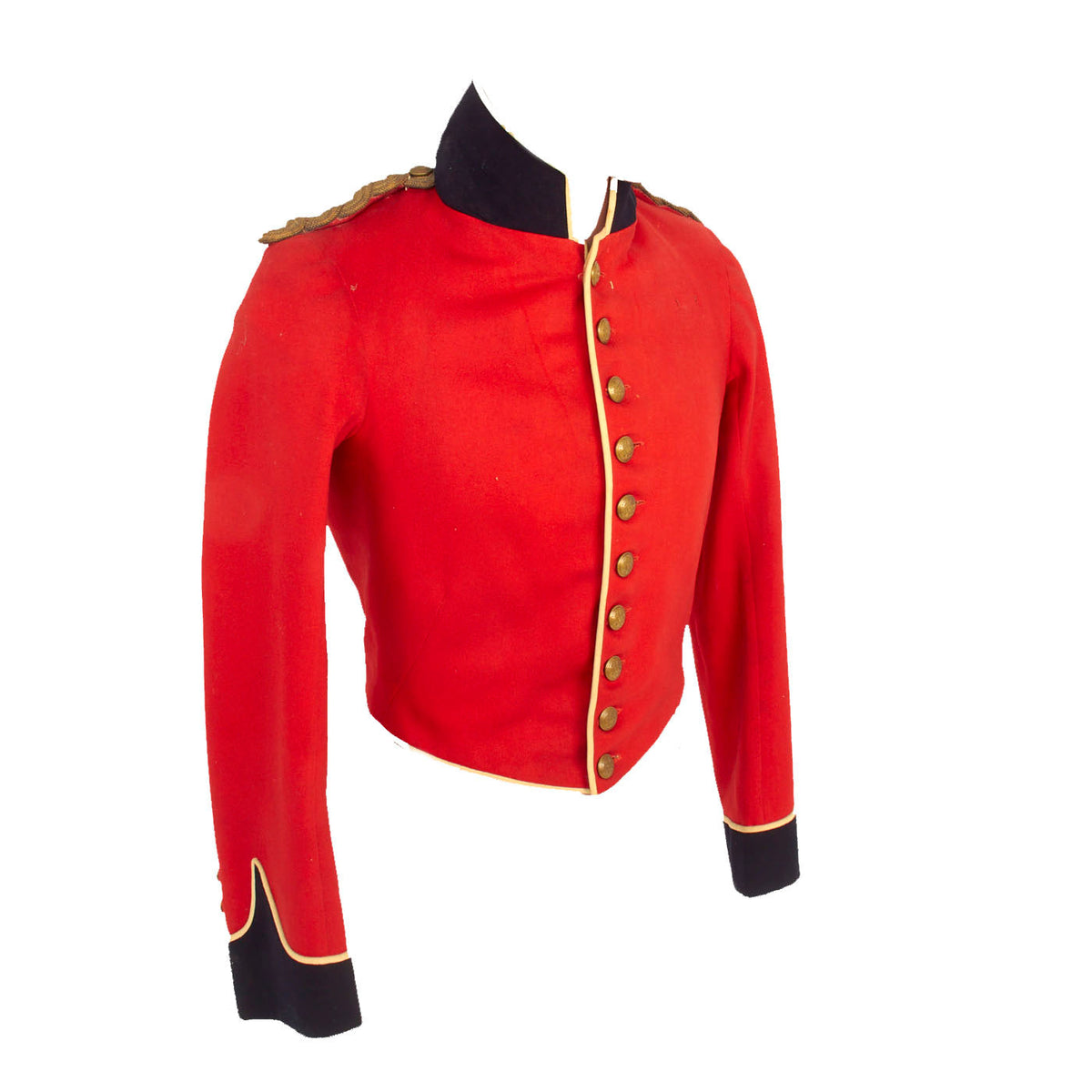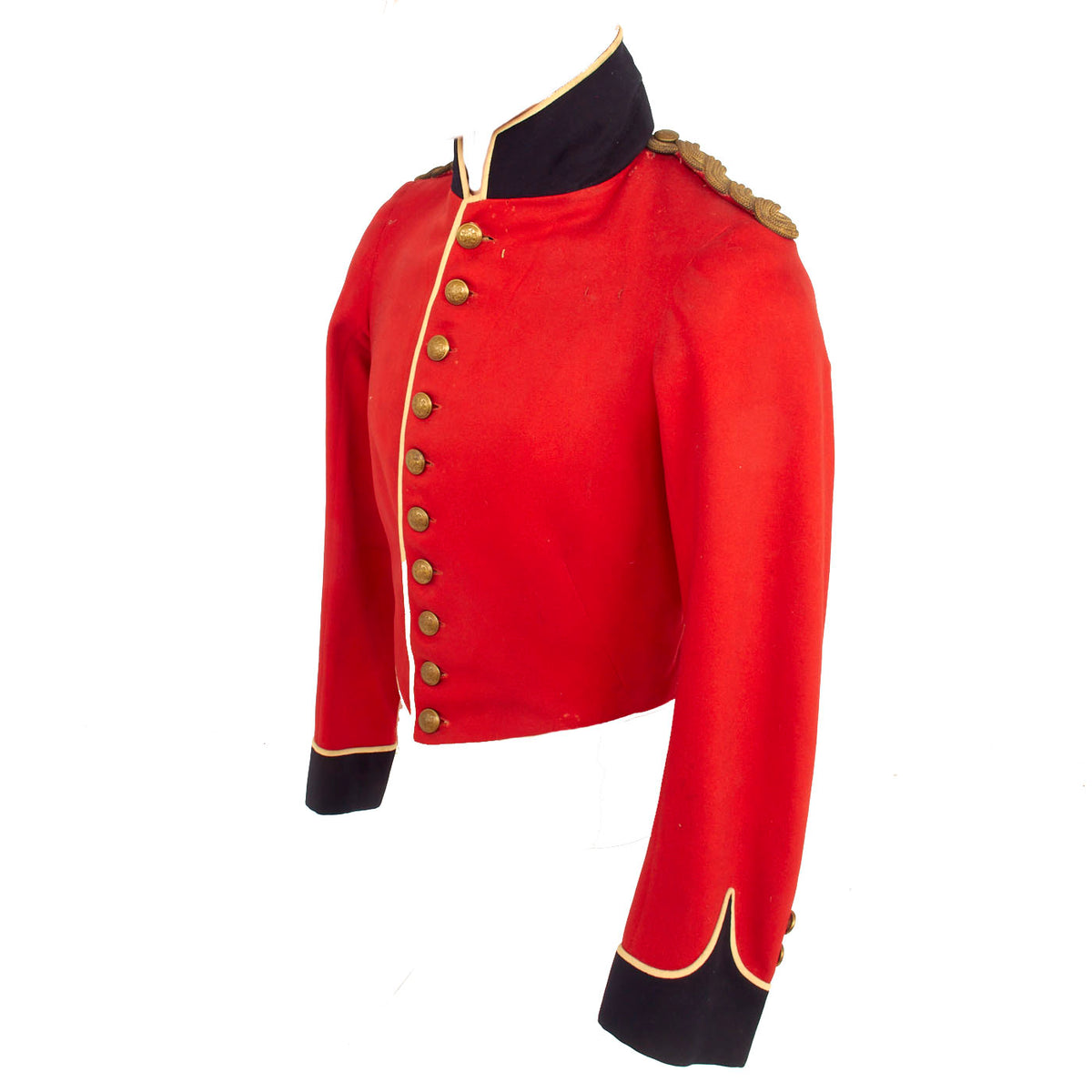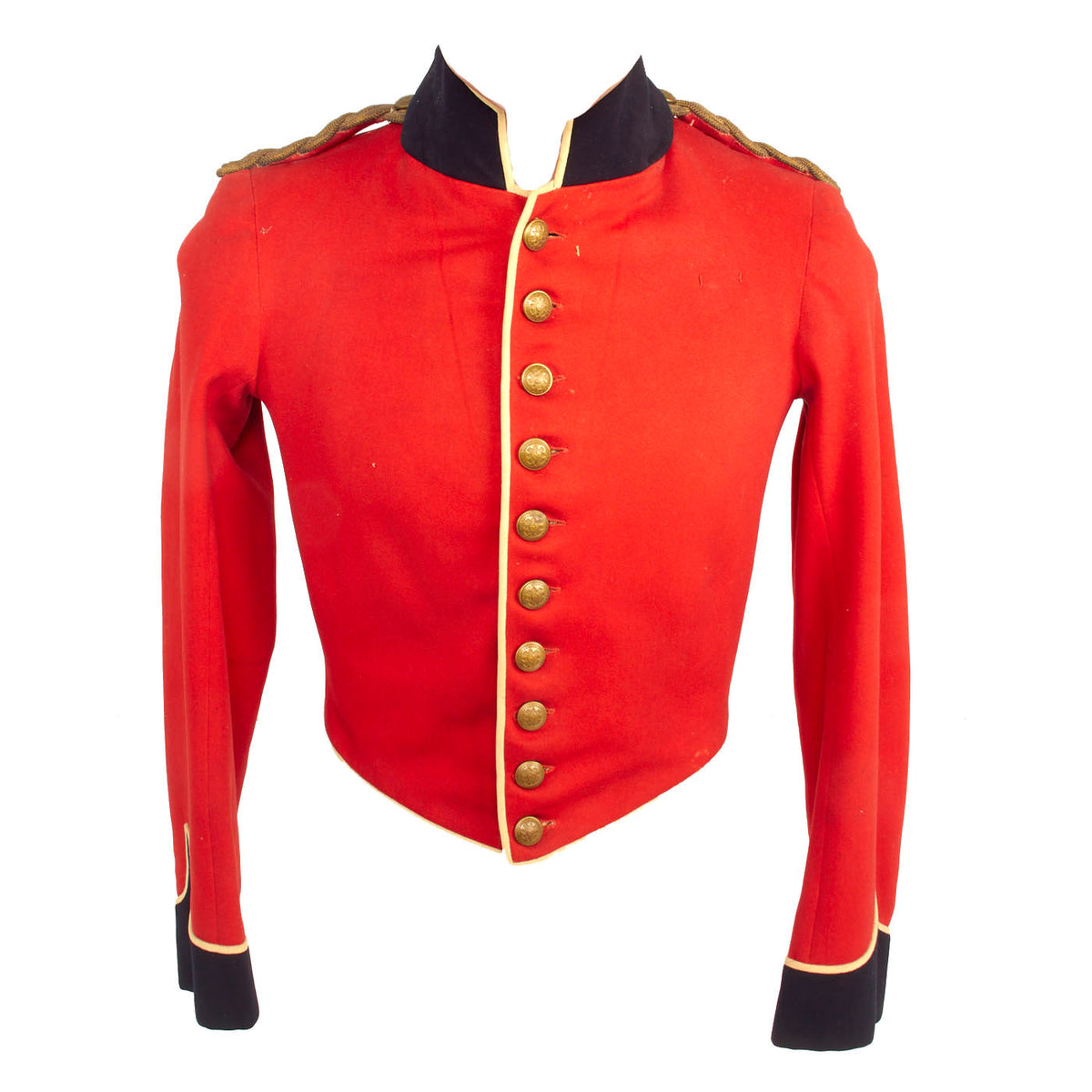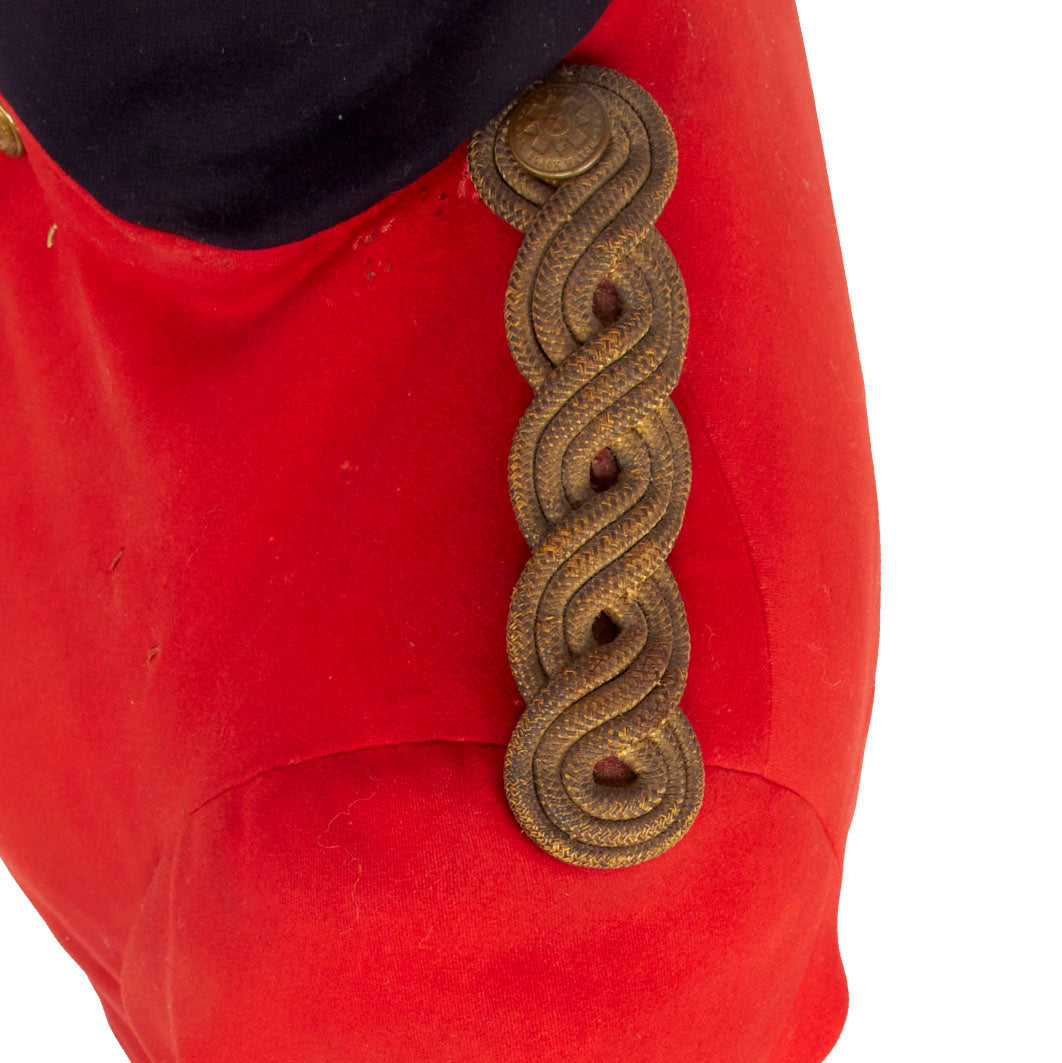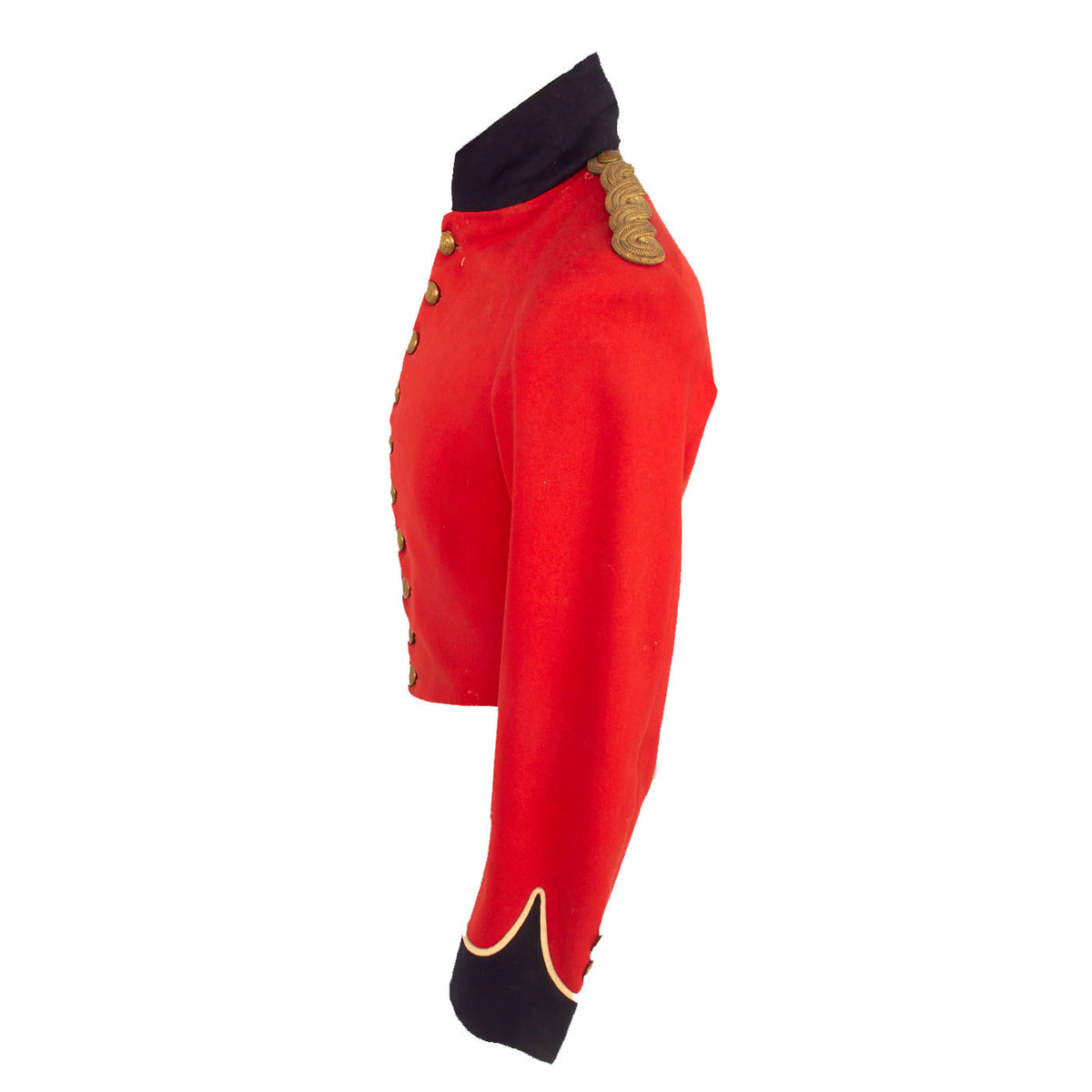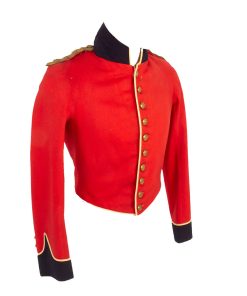Original British Pre WWI Era Scottish Royal Highlanders Black Watch Second Lieutenant No. 1 Ceremonial Dress Scarlet Tunic Original Items
$ 225,00 $ 90,00
Original Item: Only One Available. The Black Watch, 3rd Battalion, Royal Regiment of Scotland (3 SCOTS) is an infantry battalion of the Royal Regiment of Scotland. The regiment was created as part of the Childers Reforms in 1881, when the 42nd (Royal Highland) Regiment of Foot (The Black Watch) was amalgamated with the 73rd (Perthshire) Regiment of Foot. It was known as The Black Watch (Royal Highlanders) from 1881 to 1931 and The Black Watch (Royal Highland Regiment) from 1931 to 2006. Part of the Scottish Division for administrative purposes from 1967, it was the senior Highland regiment. It has been part of the Scottish, Welsh and Irish Division for administrative purposes from 2017.
This ceremonial dress scarlet tunic once belonged to a Second Lieutenant in the famed Royal Highlanders Black Watch. This scarlet red uniform is in lovely condition with beautiful shoulder straps, not adorned with any pips for use by a Second Lieutenant. The jacket is in great condition with minor wear, as this was worn only for ceremonial purposes. There is minor staining and mothing present but nothing that subtracts from the beauty. Each button is the correct brass THE ROYAL HIGHLANDERS BLACK WATCH now tarnished to a lovely patina.
Comes more than ready for display.
Approximate Dimensions:
Collar to shoulder: 10”
Shoulder to sleeve: 25”
Shoulder to shoulder: 14”
Chest width: 17”
Waist width: 14.5″
Hip width: 14.5”
Front length: 23.5″
The regiment was created as part of the Childers Reforms in 1881, when the 42nd (Royal Highland) Regiment of Foot (The Black Watch) was amalgamated with the 73rd (Perthshire) Regiment of Foot to form two battalions of the newly named Black Watch (Royal Highlanders). The 42nd became the 1st Battalion, and the 73rd became the 2nd Battalion.
The 1st Battalion saw action at the Battle of Tel el-Kebir in September 1882 during the Anglo-Egyptian War. It was in combat again during the Mahdist War, at the First and Second Battles of El Teb in February 1884, the Battle of Tamai in March 1884 and at the Battle of Kirbekan in February 1885.[8][dead link] They were stationed in India from 1896, but was sent to South Africa for service during the Second Boer War. After the war ended in June 1902 with the Peace of Vereeniging, 630 officers and men left Cape Town on the SS Michigan in late September 1902, arriving at Southampton in late October, when they were posted to Edinburgh.
The 2nd Battalion was posted to South Africa in October 1899, following the outbreak of the Second Boer War. The battalion suffered heavy losses at the Battle of Magersfontein in December 1899. After the end of the war, about 730 officers and men left Point Natal for British India on the SS Ionian in October 1902, where after arrival in Bombay it was stationed in Sialkot in Umballa in Punjab.
In 1908, the Volunteers and Militia were reorganized nationally, with the former becoming the Territorial Force and the latter the Special Reserve; the regiment now had one Reserve and five Territorial battalions.
Fast Shipping with Professional Packaging
Thanks to our longstanding association with UPS FedEx DHL, and other major international carriers, we are able to provide a range of shipping options. Our warehouse staff is expertly trained and will wrap your products according to our exact and precise specifications. Prior to shipping, your goods will be thoroughly examined and securely secured. We ship to thousands clients each day across multiple countries. This shows how we're dedicated to be the largest retailer on the internet. Warehouses and distribution centres can be located throughout Europe as well as the USA.
Note: Orders with more than one item will be assigned a processing date depending on the item.
Before shipping before shipping, we'll conduct a thorough inspection of the items you have ordered. Today, the majority of orders will be delivered within 48 hours. The delivery time will be between 3-7 days.
Returns
The stock is dynamic and we cannot completely manage it because multiple stakeholders are involved, including our factory and warehouse. So the actual stock may alter at any time. It's possible that you may not receive your order once the order has been made.
Our policy is valid for a period of 30 days. If you don't receive the product within 30 days, we are not able to issue a refund or an exchange.
You can only return an item if it is unused and in the same state as the day you received it. You must have the item in its original packaging.
Related products
Uncategorized
Australian WWII Owen MK1 Machine Carbine SMG Custom Fabricated Replica with Sling Original Items
Uncategorized
Uncategorized
Uncategorized
Uncategorized
Armored Burgonet Helmet & Polearm from Scottish Castle Leith Hall Circa 1700 Original Items
Uncategorized
Uncategorized
Uncategorized
Uncategorized
Uncategorized
Band of Brothers ORIGINAL GERMAN WWII Le. F.H. 18 10.5cm ARTILLERY PIECE Original Items
Uncategorized
Uncategorized
Uncategorized
Uncategorized
Uncategorized
Uncategorized
Uncategorized
Uncategorized
Armoured Fighting Vehicles of the World: AFVs of World War One (Hardcover Book) New Made Items
